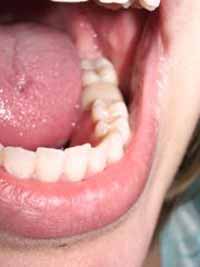Japanese scientists to reconstitute hair follicles, kidneys and livers
Scientists in Japan claim to be the first to have grown teeth in the lab that can then be successfully grafted into adult animals. The method, they suggest, could be used to reconstitute a wide variety of organs, including hair follicles, kidneys and livers.

But publication of their research in Nature Methods this week has drawn some scathing criticism. 'It's a disgrace,' said Paul Sharpe, professor of craniofacial development at King's College, London , UK . 'The paper says nothing new,' he said. 'I wouldn't have accepted it for any journal, let alone Nature Methods.'
The researchers collected epithelium and mesenchyme cells from the incisors of two-week-old mice and injected them into a drop of collagen. Cells from this so-called 'tooth germ' were then grafted into the gum of a waiting mouse and a new tooth began to grow.
'A complete tooth structure, showing penetration of nerve fibres, can be successfully developed following the engraftment,' said Takashi Tsuji, associate professor of biological technology at the Tokyo University of Science in Japan . 'Our method provides a substantial advance in the development of bioengineered organ replacement strategies and regenerative therapies,' he and his colleagues report, according to Chemistry World.
Takashi Tsuji at the Tokyo University of Science, Japan, and his colleagues took single-tooth mesenchymal and epithelial cells – the two cell types that develop into a tooth – from mouse embryos. They stimulated these cells to multiply before injecting them into a drop of collagen gel. Within days, the cells formed tooth buds – the early stage of normal tooth formation.
The team then transplanted these tooth buds into cavities left after they had extracted teeth from adult mice. There, they developed into teeth with a normal structure and composition. The engineered teeth also developed a healthy blood supply, and nerve connections.
Previous approaches to regenerating teeth have involved growing them in the kidneys of mice before transplanting them into the mouths of other mice, informs New Scientist.
Subscribe to Pravda.Ru Telegram channel, Facebook, RSS!


